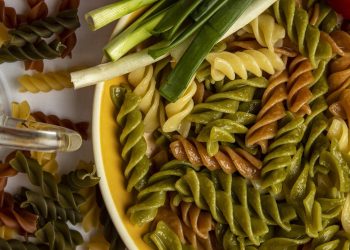Cheat meals are a popular concept in diet and fitness culture, often seen as a reward for adhering to a strict eating plan. For some, they offer a mental break from the rigors of dieting, while for others, they can become a slippery slope leading to overindulgence. Understanding how cheat meals affect weight loss is crucial for deciding whether they fit into your health journey. Here’s an in-depth look at the pros, cons, and strategies for incorporating cheat meals effectively.
What Are Cheat Meals?
A cheat meal is typically defined as a planned indulgence where you eat foods that might not align with your regular diet. It’s often viewed as a way to satisfy cravings, boost morale, and break the monotony of restrictive eating. While cheat meals can vary in size and content, they usually include higher-calorie or less nutritious options like pizza, burgers, ice cream, or desserts.
The Potential Benefits of Cheat Meals
- Mental Relief
- Dieting can be mentally taxing, and a cheat meal provides a psychological break. This can help reduce feelings of deprivation and make it easier to stick to your plan in the long term.
- Example: Enjoying your favorite dessert guilt-free can curb the urge to binge later.
- Boosts Metabolism
- Some proponents of cheat meals suggest that consuming a higher-calorie meal can temporarily boost metabolism by increasing leptin levels, a hormone that regulates hunger and energy expenditure.
- While this effect is small, it may provide a short-term metabolic uptick.
- Improves Adherence
- Knowing you have a cheat meal to look forward to can improve adherence to your diet during the week. It can act as a reward system that keeps you motivated.
- Social Flexibility
- Cheat meals allow you to participate in social events without feeling restricted. This can improve your overall quality of life and reduce the stress associated with dieting in social settings.
The Risks of Cheat Meals
- Overindulgence
- Cheat meals can sometimes lead to overeating, especially if they’re unplanned or overly indulgent. This can offset your calorie deficit and hinder weight loss progress.
- Example: Turning a cheat meal into a cheat day or weekend can add thousands of extra calories.
- Guilt and Negative Mindset
- Viewing certain foods as “bad” or “forbidden” can create a negative relationship with food. If you overeat during a cheat meal, you might feel guilt or shame, which can lead to a cycle of restriction and binging.
- Potential for Cravings
- Consuming high-sugar or high-fat foods during a cheat meal may trigger cravings for similar foods in the days that follow, making it harder to return to your regular diet.
- Inconsistent Results
- For some individuals, cheat meals may disrupt the consistency needed for weight loss. They can slow progress if not properly accounted for within your overall calorie goals.
How to Incorporate Cheat Meals Effectively
- Plan Ahead
- Schedule your cheat meal in advance to prevent impulsive decisions. This ensures it fits into your overall calorie and macronutrient goals.
- Example: If you have a cheat meal on Saturday night, adjust your intake earlier in the day to accommodate the extra calories.
- Keep Portions in Check
- Enjoy your cheat meal without going overboard. Savor your food and stop eating when you’re satisfied, not stuffed.
- Focus on Quality Over Quantity
- Choose indulgent foods that you truly enjoy rather than mindlessly consuming junk food. For example, opt for a gourmet burger instead of a fast-food option.
- Balance Your Week
- Offset a higher-calorie cheat meal by eating lighter, nutrient-dense meals the rest of the week. This helps maintain your overall calorie deficit.
- Stay Active
- Incorporate exercise on the day of or after a cheat meal to help balance the extra calories and support your weight loss goals.
Alternatives to Cheat Meals
If cheat meals don’t work for you, consider these alternatives:
- Incorporate Treats Into Your Diet
- Instead of dedicating an entire meal to indulgence, include small treats in your daily diet. For example, have a square of dark chocolate after dinner or a scoop of ice cream as an occasional snack.
- Practice Flexible Dieting
- Use a calorie or macro tracking approach that allows room for all types of foods in moderation. This eliminates the need for cheat meals altogether.
- Reframe Your Mindset
- Shift your focus from “good” and “bad” foods to overall balance and nourishment. This can help reduce the psychological need for cheat meals.
Sample Cheat Meal Strategy
Monday to Friday:
- Follow your regular diet with balanced meals and snacks.
- Maintain a calorie deficit by eating nutrient-dense, whole foods.
Saturday (Cheat Meal Day):
- Enjoy a higher-calorie meal, such as pizza or a burger, while staying mindful of portion sizes.
- Pair the meal with a side of vegetables or a salad to add fiber and nutrients.
Sunday:
- Return to your regular eating habits and stay hydrated to help your body process the indulgence.
Listening to Your Body
- Hunger Signals
- Pay attention to whether your cravings stem from physical hunger or emotional triggers. Address emotional hunger with non-food solutions like exercise, meditation, or journaling.
- Energy Levels
- Monitor how you feel after cheat meals. If they leave you sluggish or bloated, adjust your approach.
- Progress Tracking
- Keep an eye on your weight loss progress. If cheat meals consistently hinder your results, consider reducing their frequency or size.
The Role of Moderation
The key to successfully incorporating cheat meals into your diet is moderation. When done mindfully, cheat meals can provide a psychological boost and help you stay committed to your weight loss plan. However, they should complement your overall strategy rather than detract from it. Remember, weight loss is a marathon, not a sprint, and finding a sustainable approach is essential for long-term success.










